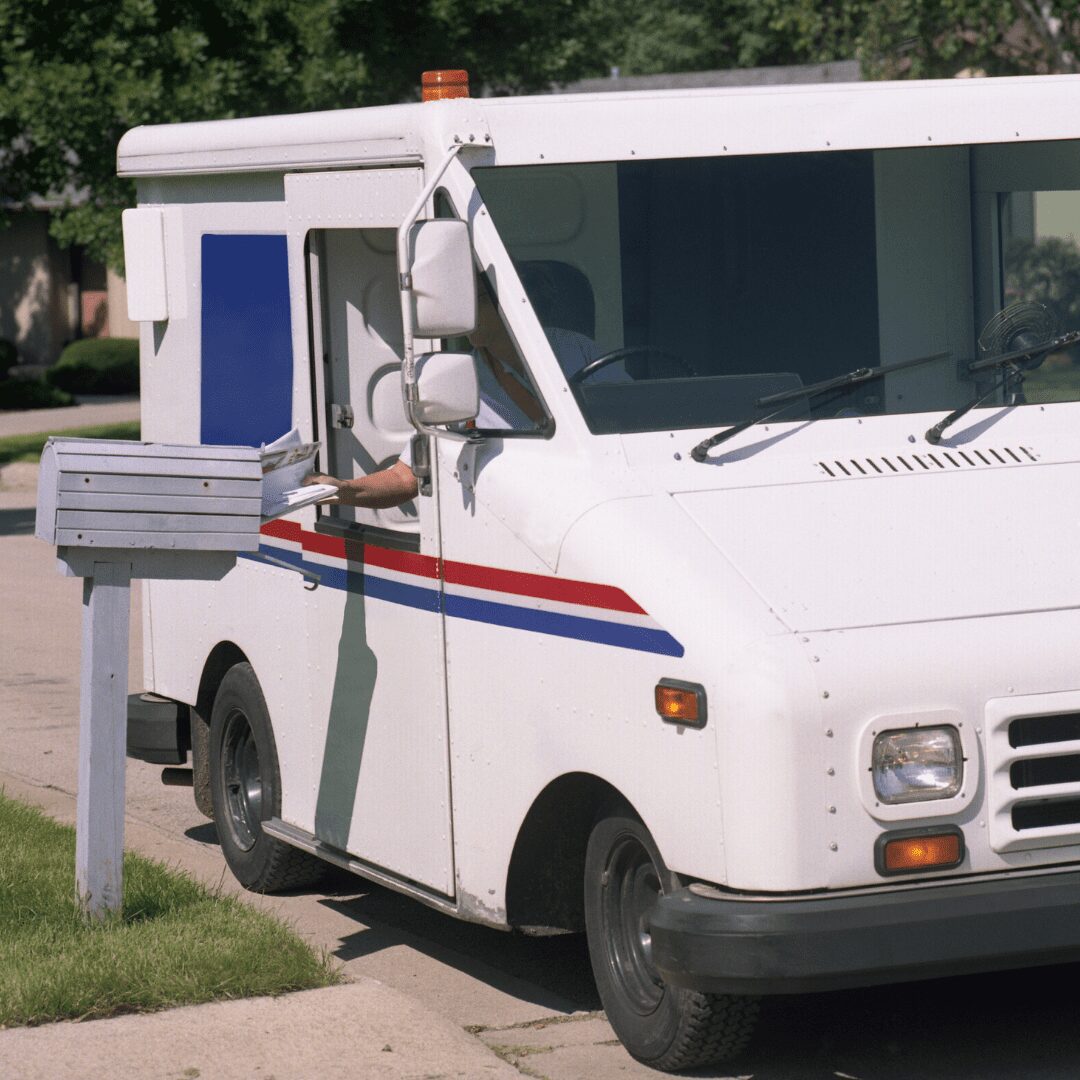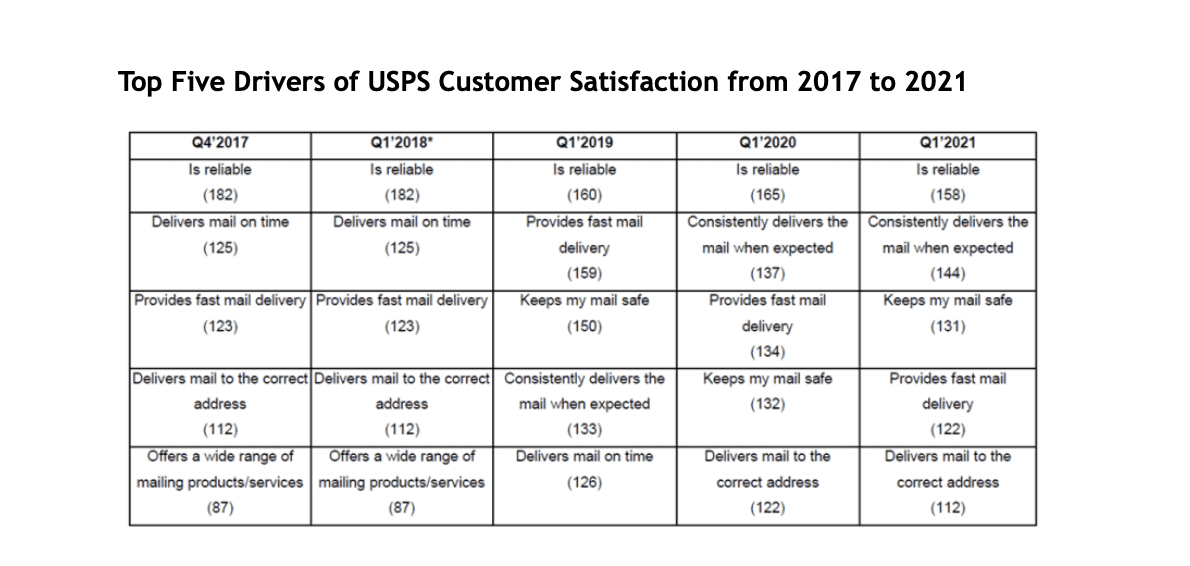
Three Things to Know about USPS Mail Slowdowns
Ross Marchand
July 27, 2021
All eyes are on the U.S. Postal Service (USPS), as the agency mulls changing the way that mail is delivered. USPS leadership has proposed relaxing current service standards for first-class mail and periodicals, meaning that fewer Americans would be able to rely on two and three-to-five-day delivery turnarounds. Predictably, there’s been no shortage of opposition to this changing of service standards. And, many justifiably fear that the slowdown will wreak havoc on the USPS’ reputation. The Postal Regulatory Commission’s (PRC) recently released advisory opinion on the subject and details some of these concerns and raises the prospect that the USPS hasn’t done its homework before proposing sweeping changes. Below, the Taxpayers Protection Alliance (TPA) highlights the key points of the PRC’s analysis. TPA hopes that the USPS will clarify their assumptions and commit to leaner, more reliable agency operations.
- All About That Base(line).
According to America’s mail carrier, an important benefit of relaxing service standards is saving on delivery costs. The USPS predicts that slowing down the mail and substituting air transportation in favor of highway transportation will save the agency roughly $169 million on net per year. Even taking this figure at face value, these cost savings do not amount to much during a fiscal year (FY). The PRC notes, “[t]he Postal Service’s projected net cost savings of $169 million represents 3.4 percent of total transportation costs for FY 2020 and less than a quarter of one percent of the total FY 2020 operating expenses of [$]82 billion.”
And there’s every reason to believe the present figures should not be taken at face value. Estimating cost savings is always a question of, “compared to what?” The USPS is using FY 2020 as a baseline to estimate cost savings, despite the PRC’s concerns that PRC was an anomalous year cost-wise due to COVID-19. In particular, the USPS admits in their FY 2020 Form 10-K that 2020 was a uniquely expensive year for charted air transportation, owing to higher package volumes (i.e. more weight than usual) and limited air carrier availability due to pandemic travel restrictions. This perfect storm resulted in an astounding 12.7 percent increase in air expenses from the previous year. Taking an alternative baseline year would be a far better approach to using the wackiest year on record as a guide. The USPS would be far better off taking the average of 2018 and 2019 air and highway transportation expenses to compare their changes with the status-quo.
2. Be Careful What You Wish For.
Clearly, the USPS dreams of a scenario where highway drivers pick up most of the slack instead of chartered flights ferrying around mail and packages. The agency believes that ground transportation is more cost-effective and reliable than air transportation because “surface transportation is generally less operationally complex than air transportation: the former requires fewer ‘touches,’ handoffs, and opportunities for error, delay, and added cost for the latter.” Thus, reducing the weight of flown first-class mail by 50 percent could put a dent in delivery costs. The below figure illustrates the weight (pun intended) that the USPS places on highway deliveries to deliver cost reductions.

Note: Chart originally appeared in the PRC’s advisory opinion. See Docket No. N2021-1.
Strangely, the USPS acknowledges there’s a shortage in Highway Contract Route (HCR) drivers but states that this will not impact estimated cost savings. But if the American Trucking Association is correct and the shortage of new truckers reaches 160,000 by 2028, it’s hard to imagine there not being a large impact on hauling costs. And, as TPA has previously pointed out, the USPS isn’t great at monitoring cost overruns and billing mistakes in the HCR system. Even if highway routes offer some delivery savings on the margin, it is hardly a panacea for the agency’s woes.
3. The Customer is Always Right.
By far, the strangest part of USPS’ justification for their mail service slowdowns is their appeal to consumer satisfaction. It doesn’t take a consumer relations guru to realize that buyers like to have their goods and services rendered to them quickly. But America’s mail carrier is stuck on an odd theory that their consumers care far more about “reliability” than “speed,” and that the former is more important than the latter. To bolster this theory, the USPS presents consumer survey data which purports to break down these priorities into discrete categories:
Top Five Drivers of USPS Customer Satisfaction from 2017 to 2021
 Source: USPS quarterly conducted BHT surveys.
Source: USPS quarterly conducted BHT surveys.
Note: Figures in the parenthesis represent “Key Driver Index” scores, whereas higher scores indicate higher importance to consumers. For more information on how these scores are calculated, see FY 2021 Quarter 1 BHT survey.
It doesn’t seem to occur to the USPS, though, that consumers might highly value both “fast mail delivery” and “reliability” and that these two concepts may overlap quite a bit. The PRC reasonably argues that it is inappropriate to read too much into “reliability” since it could refer to any number of things, including USPS consumer support, lack of mail damage, recognition of change-of-address, etc. Comparing such a broad metric with the specific metric of “fast mail delivery” is inappropriate and defies common-sense.
The dual importance of speed and reliability in delivering the mail has been amplified by the recently-reported frustration facing some Baltimore residents over slow delivery operations and recent Inspector General testimony on the matter.
The USPS has responded to criticism about its consumer preference theorizing by stating, “neither Title 39 nor the Commission’s rules require [it] to submit customer surveys (or any other particular kind of evidence).” This betrays a larger problem with the USPS. When threatened by independent analysis/scrutiny, the agency retreats to their problematic position that they don’t have to share information with anybody. This attitude is particularly concerning given that the USPS is a federal agency that receives taxpayer dollars.
In conclusion….
The USPS owes it to the American people to explain its actions more thoroughly. Slowing down approximately 40 percent of first-class mail and 7 percent of periodicals requires a detailed explanation that fully takes delivery costs and consumer satisfaction into account. But taxpayers and consumers are not getting the full truth that degrading service standards will erode the agency’s credibility while producing negligent savings.
Ross Marchand is a Senior Fellow at Taxpayers Protection Alliance
